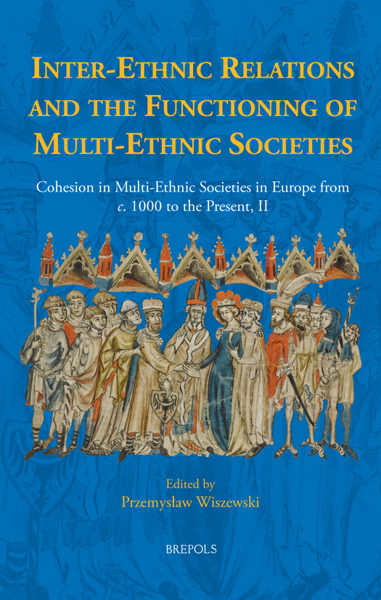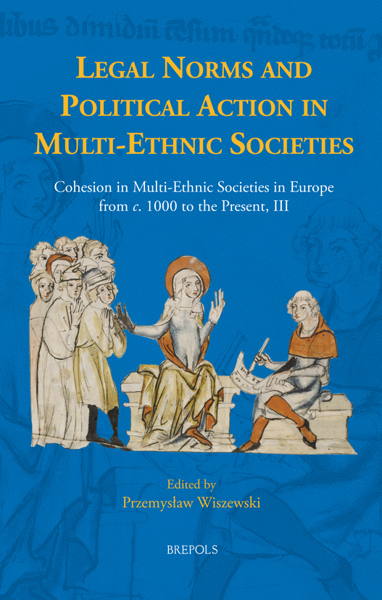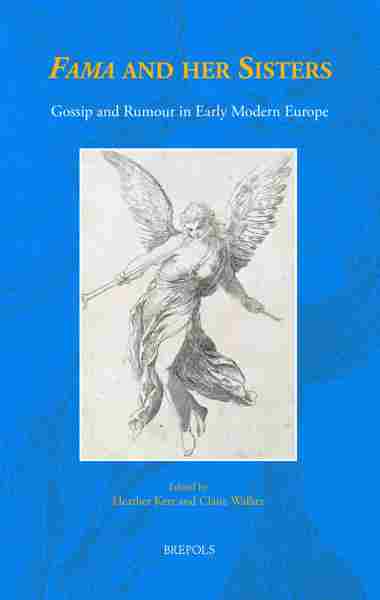
Writing Royal Entries in Early Modern Europe
Marie-Claude Canova-Green, Jean Andrews, Marie-France Wagner (eds)
- Pages: 420 p.
- Size:156 x 234 mm
- Illustrations:17 b/w, 1 col., 1 tables b/w.
- Language(s):English, French
- Publication Year:2013
- € 140,00 EXCL. VAT RETAIL PRICE
- ISBN: 978-2-503-53602-6
- Hardback
- Available
- € 140,00 EXCL. VAT RETAIL PRICE
- ISBN: 978-2-503-55784-7
- E-book
- Available
"La mise en perspective (...) fait de ce recueil un important instrument pour l'étude des entrées entre XVIe et XVIIe siècles." (Bulletin de la Société Française d'Étude du Seizième Siècle, décembre 2013, n° 78, p. 53)
"Alles in allem ein sehr vielfältiger Band, der reiches Material zum Thema liefert, ohne allerdings eine große Synthese zu versuchen. Aber die vielen Fallstudien und die weiteren Verweise auf Literatur können eine Grundlage einer solchen Zusammenfassung bilden, deren Entstehen in der weiteren Forschung sehr wünschenswert scheint." (Karl Vocelka, in: Francia-Recensio, 2014/2)
"This collection of essays, edited by a specialist in French seventeenth-century festivals, makes an important contribution to the discussion of the European textual genre of the festival account. (...) Each chapter has a bibliography of primary and secondary sources, the collection is very well edited and there is a good index. In short, this book is thoroughly to be recommended." (Helen Watanabe-O'Kelly, in: The Seventeenth Century, December 2014, Vol. 29, no. 4, p. 418-419)
"(...) the exemplary notations at the bottom of the pages, the individual bibliographies, and the index add greatly to the usefulness of this collection to anyone interested in the culture and texts of Renaissance entries." (Lawrence M. Bryant, in: Renaissance Quarterly, 68.1, 2015, p. 291-293)
“L’ouvrage, en somme, constitue un fonds considérable pour le lecteur curieux ou le chercheur désireux d’approfondir la question de l’utilisation politique du cérémonial à l’époque moderne.” (Emmanuel Lemée, Dix-septième siècle 2017/4, 277, p. 757)
Royal and ducal entries into major cities were an important aspect of political life in Renaissance and early modern Europe and the New World. The festivities provided an opportunity for the municipal authorities to show off their wealth, learning, political nous, and aspiration while allowing writers, painters, sculptors, architects, set-designers, scene-painters, dancers, musicians, choreographers, and others an unparalleled opportunity to showcase their wares. The essays in this volume cover a range of royal and ducal entries, some well documented and well known, others less so, some barely documented at all. Each essay tackles an aspect of the business of putting together an entry festivity, discusses a particular difficulty posed for the contemporary scholar by the extant documentation, or offers a consideration of issues central to the development of this type of festivity or the literature associated with it. The entries and royal progresses of members of the Habsburg, Medici, Valois, Bourbon, and Tudor dynasties are examined, as are the festivities commissioned and mounted by powerful and strategically important cities such as Berlin, Antwerp, Paris, Florence, London, and Mexico City to welcome these great personages or their marginally less great ducal representatives.
Preface
The Material Form and the Function of Printed Accounts of Henri II’s Triumphal Entries (1547–51) — HÉLÈNE VISENTIN
Le Statut textuel de l’entrée royale ou solennelle sous le règne d’Henri IV : le cas particulier de l’entrée du roi à Moulins en 1595 — MARIE-FRANCE WAGNER
Les Inscriptions poétiques du livret de Jacques de Cahaignes et l’éloge latin du duc de Joyeuse lors de son entrée solennelle à Caen (1583) — JOHN NASSICHUK
Travelling with a Queen: The Journey of Margaret of Austria (1598–99) between Evidence and Reconstruction — MARIA INES ALIVERTI
(Failed) Early Modern Madrid Festival Book Publication Projects: Between Civic and Court Representation — DAVID SÁNCHEZ CANO
Images of Co-Monarchy in the London Entry of Philip and Mary (1554) — ALEXANDER SAMSON
Florentine Festivals for the Entry of Archduke Leopold V of Austria in 1618 — SARA MAMONE and CATERINA PAGNINI
French Royal Entries and the Antique (1515–65) — RICHARD COOPER
Carlos de Sigüenza y Góngora’s Depiction of the Aztec Emperors for the Viceregal Entry into Mexico City of 1680 — JEAN ANDREWS
The Return of the Elector as King: Johann von Besser’s Record of the Berlin Entry in May 1701 of Elector Friedrich III as Friedrich I, King in Prussia — SARA SMART
The Politics of Translation: Arthur Golding’s Account of the Duke of Anjou’s Entry into Antwerp (1582) — ELIZABETH GOLDRING
A Question of Authenticity: Pierre Matthieu, Creator of Entries and Historiographer Royal — MARGARET M. MCGOWAN
Querelle littéraire sur le motif du troisième arc de triomphe érigé pour l’entrée des ducs à Aix-en-Provence en 1701 — CLAIRE LATRAVERSE
Malaise dans la cérémonie : Marie de Médicis à Marseille — DANIEL VAILLANCOURT
Le Theatre des bons Engins de Guillaume de La Perrière : une ‘écriture’ de l’entrée de Marguerite de Navarre à Toulouse en 1535 — CLAUDIE BALAVOINE
From Object of Curiosity to Subject of Conversation: Mlle de Scudéry and the Paris Entry of Louis XIV and Maria Teresa (1660) — MARIE-CLAUDE CANOVA-GREEN
L’Entrée royale dans l’oeuvre romanesque de Mme de Villedieu — NOBU KO AKIYAMA
Entries and Festivals in Late Sixteenth- and Early Seventeenth‑Century Florence as Precedents for Court and Theatre in England (1600–20) — J. R. MULRYNE
Le Motif de l’entrée solennelle dans l’oeuvre d’Agrippa d’Aubigné — LOUISE FRAPPIER
Entrées farcesques et burlesques : le politique travesti — CLAUDINE NÉDELEC
Index




